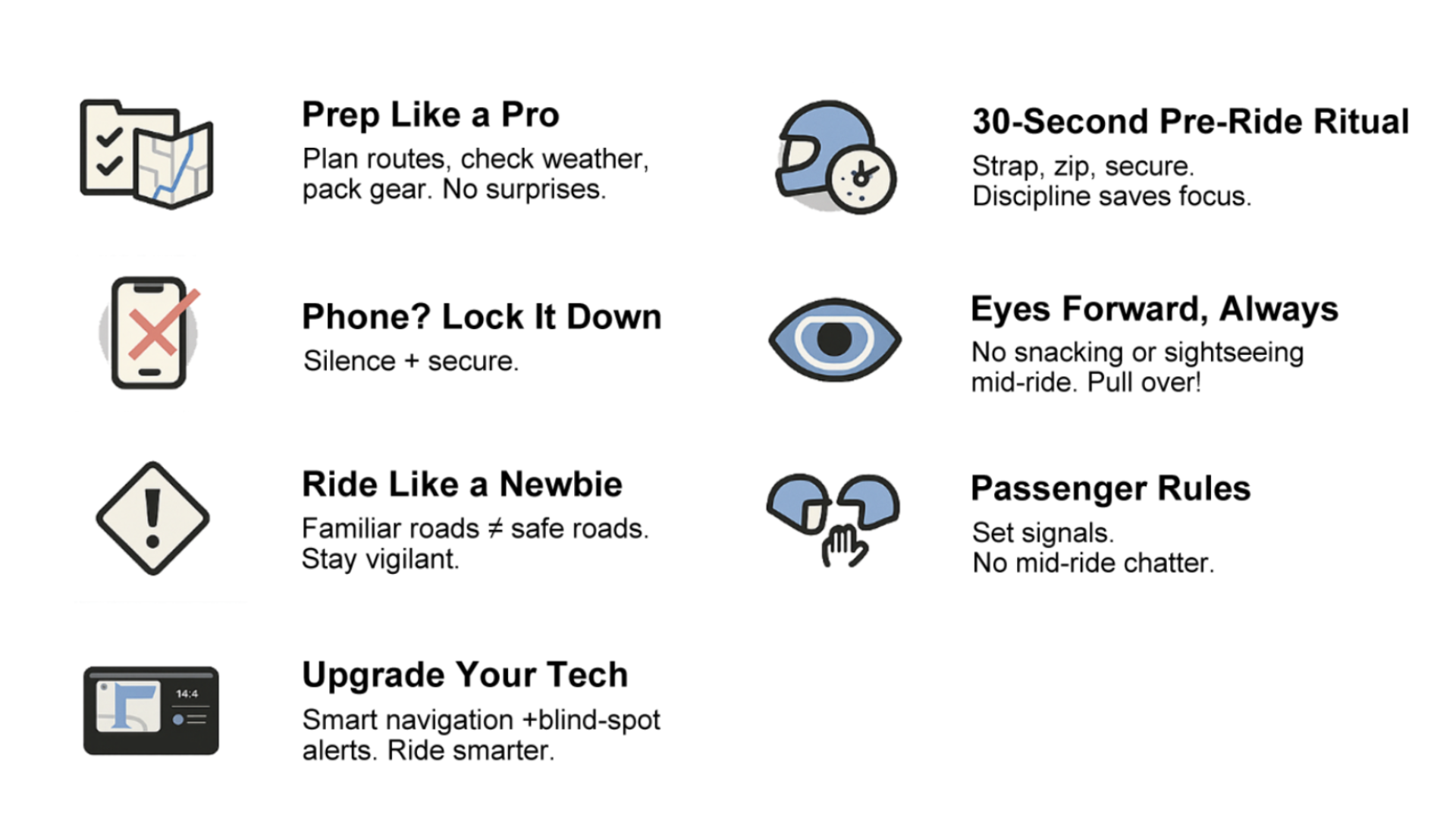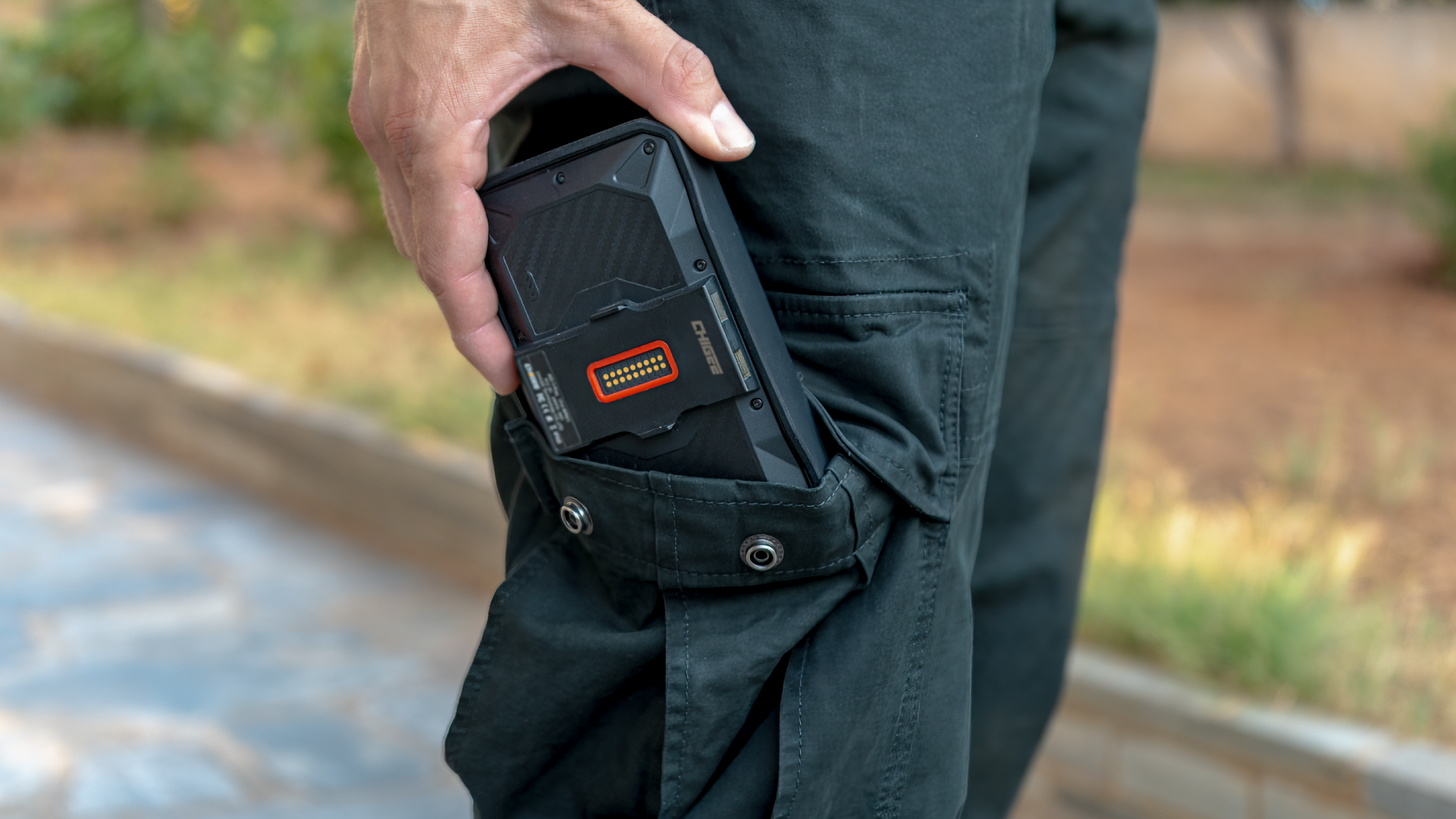Let’s be real, if someone told you a few years back that motorcycles would be fitted with displays that could show maps, stream music, warn you about blind spots, and even record your ride, you probably wouldn’t have believed it. But things have changed.
Car technology has progressed from basic transportation to fully connected, intelligent machines. Motorcycle tech? It’s right behind and is no longer a novelty. It's functional, road-tested, and built for the kind of riding most of us actually do.
Yet, many riders continue to remain skeptical. They’ve heard the myths like, it’s too distracting, it’s only for long-distance tourers, or it’s not worth the hassle.
But here’s the thing: smart motorcycle systems have advanced immensely, and most of the backlash you still hear is built on outdated assumptions. So if you're still skeptical, stick around.
We’re breaking down 10 of the most common misconceptions keeping riders from experiencing the full potential of motorcycle smart riding displays and the truth that might just change your mind. Let’s jump right into it.
1. "They’re Just Fancy GPS Units."
This is a common myth and the most outdated one. While early systems focused mainly on navigation, modern smart displays are full-featured riding hubs. Take the Chigee AIO-5 Lite, for instance:
● Apple CarPlay & Android Auto integration
● Dual 1080P dashcams (front + rear)
● Tire pressure monitoring
● Blind spot alerts
● Voice assistants
● Music, calls, messages
Reality check: This isn’t just a GPS but a complete ride’s control center.
2. "They’re Distracting and Unsafe."
That’s a fair concern. We’ve all seen someone staring at their phone mount instead of watching the car that just slammed its brakes. But here’s what makes smart displays like Chigee different: they’re built to keep your eyes forward and your hands on the bars.
With voice commands, quick-glance info, glove-friendly interface, and a 5-inch display bright enough to see under a midday sun, you’re not digging through your pockets or struggling to press buttons. And features like rear-view monitoring and blind spot alerts? Those don’t distract, they protect.
Surprisingly, the right smart display actually helps you think less while riding. It just works.
3. "A Smartphone Mount Works Just as Well."
Smartphones aren’t built for motorcycles.
Many riders think strapping their phone to the handlebars is just as good as a dedicated smart display. But here’s why that’s a dangerous misconception:
Vibration Damage: Motorcycles generate intense vibrations that destroy phone cameras and batteries over time.
Distraction Risk: Using a touchscreen phone while riding is a leading cause of accidents.
Poor Visibility: Most phones can’t compete with 1200-nit brightness in direct sunlight.
Smart displays are made for motorcycles with shock-absorbing mounts, ultra-bright screens, and instant auto-connect.
Bottom line: A phone mount is a workaround. A smart display is a purpose-built tool.
4. "They Drain Batteries Too Quickly."
One of the biggest concerns riders typically have is how long it will take for smart displays to drain their motorcycle batteries during long rides. After all, no one wants to end up stuck because their fancy new gadget drained all the power from their bike.
Fortunately, smart displays are designed with energy efficiency in mind.
For instance, Chigee motorcycle systems come equipped with advanced processors and optimized RAM to ensure minimal battery consumption while delivering peak performance.
The AIO-5 Lite / Play is equipped with low-voltage battery protection. Once it detects low voltage (drops below 12 volts), the device will shut down completely, ensuring it does not consume any more power from the battery. Therefore, it will not deplete your bike's battery.
Additionally, features like auto-connect eliminate the need for manual setup every time you start your engine, saving both time and energy.
5. "They Are Too Expensive for the Value."
They actually save money and lives in the long run. Some riders balk at the upfront cost, but smart displays pay off in multiple ways:
● Lower insurance premiums resulting from dashcam footage.
● Reduced accident risk due to collision alerts.
● Higher quality, designed to endure, and save money on repeated replacements.
6. "They Don’t Work in Harsh Riding Conditions."
Rain, dust, frost, and heat waves are a daily reality for riders.
So when someone argues, “tech like that won’t survive on my bike,” they are probably unaware of what modern systems are built for.
Chigee Dashcams, for instance, feature IP67/IP68/IP69K waterproofing, shock-absorbing aluminum frames, and can withstand extreme temperatures without a hiccup.
Additionally, the screen is scratch-resistant and supports HDR for clear visibility even in the rain. That means you can ride through downpours, dusty trails, or cold dawn commutes without a second thought.
7. "They’re a Pain to Install and Set Up."
That's right, no one wants to spend their weekend elbow-deep in a wiring mess.
Fortunately, smart displays nowadays aren’t like installing a car stereo from the '90s.
Most riders have theirs up and running in under 30 minutes or less if they've installed accessories before. Chigee even offers portable mounting options, wireless remote controls, and auto-connect features that remember your phone every time you hit the ignition.
Bottom line? This is closer to plug-and-play than plug-and-pray.
8. "Vibration Damages Screens and Components."
Another widespread myth suggests that constant vibrations from riding could damage sensitive screens and internal components.
While this concern was valid in earlier iterations of smart displays, manufacturers have since addressed these issues head-on. Today, smart displays feature advanced engineering designed specifically for motorcycles. For example, the CHIGEE AIO-6 features a floating, vibration-damping mount that helps protect internal components and maintain screen clarity—even on rugged terrain.
9. "They Are Uneasy to Use."
Some riders worry that operating a smart motorcycle display requires technical expertise or extensive training. This couldn’t be farther from the truth. Today’s systems are designed with user-friendliness in mind, offering intuitive interfaces and seamless smartphone integration.
10. "They’re Only for High-End or Touring Bikes."
Smart displays are often thought of as a luxury reserved for BMW GS riders and premium tourers. But that’s another outdated myth.
Chigee smart systems are compatible with over 95% of motorcycles, including:
● Standard bikes
● Cruisers Adventure bikes
● Naked and sportbikes
The AIO-5 Play for BMW even includes native Wonder Wheel control and supports TPMS (tire pressure) data, while the XR-2 offers a budget-friendly option that doesn’t skimp on features.
What to Look for in a Smart Motorcycle Display?
If you’re shopping around, don’t just grab whatever’s cheapest. Look for:
● 1200+ nit display brightness for daylight visibility
● Dual 1080P cameras
● CarPlay & Android Auto
● Voice command compatibility
● TPMS support
● Waterproof rating
● Shock resistance
● Auto-connect at ignition
● Expandable storage
● OTA firmware updates
Chigee checks all of these. Some models even add 5G Wi-Fi for fast video transfer and real-time alerts.
Conclusion
Instead of being unnecessary luxuries, these gadgets are practical, reliable, and downright game-changing for modern riders.
With features like enhanced safety, smooth navigation, hands-free connectivity and real-time data, smart displays offer a truly enhanced riding experience, keeping riders more connected and informed than ever before.






Leave a comment
This site is protected by hCaptcha and the hCaptcha Privacy Policy and Terms of Service apply.